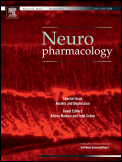
“Medical marijuana continues to gain acceptance and become legalized in many states. Various species of the marijuana plant have been cultivated, and this plant can contain up to 100 active compounds known as cannabinoids.
Two cannabinoids seem the most clinically relevant: Δ9-tetrahydrocannabinol (THC), which tends to produce the psychotropic effects commonly associated with marijuana, and cannabidiol (CBD), which may produce therapeutic effects without appreciable psychoactive properties.
Smoking marijuana, or ingesting extracts from the whole plant orally (in baked goods, teas, and so forth), introduces variable amounts of THC, CBD, and other minor cannabinoids into the systemic circulation where they ultimately reach the central and peripheral nervous systems.
Alternatively, products containing THC, CBD, or a combination of both compounds, can also be ingested as oral tablets, or via sprays applied to the oral mucosal membranes. These products may provide a more predictable method for delivering a known amount of specific cannabinoids into the body.
Although there is still a need for randomized controlled clinical trials, preliminary studies have suggested that medical marijuana and related cannabinoids may be beneficial in treating chronic pain, inflammation, spasticity, and other conditions seen commonly in physical therapist practice.
Physical therapists should therefore be aware of the options that are available for patients considering medical marijuana, and be ready to provide information for these patients.”
http://www.ncbi.nlm.nih.gov/pubmed/27660328









